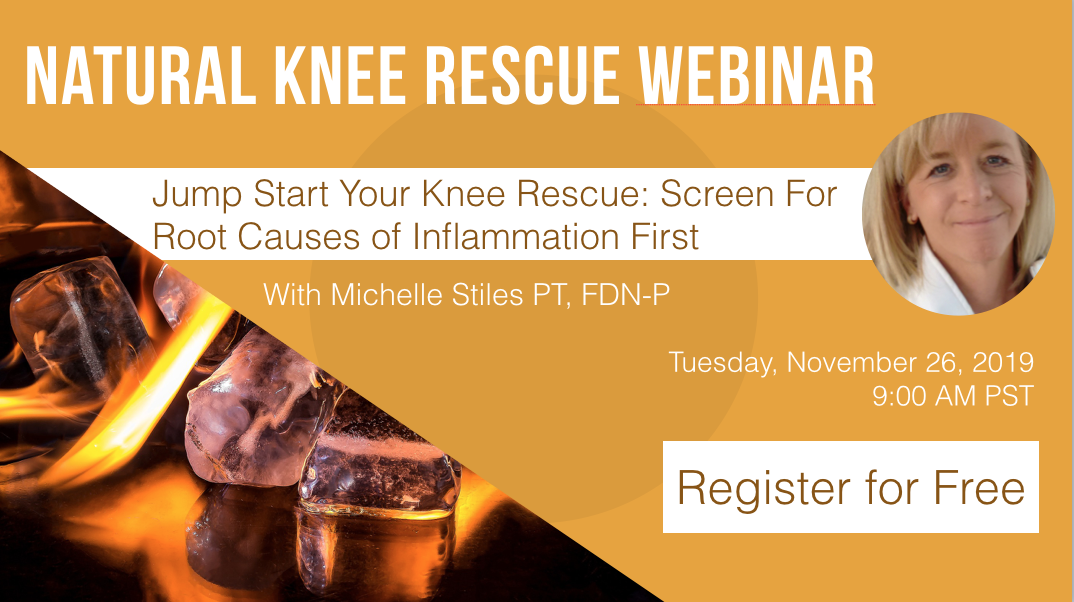Avoid Mistakes To Recover Faster
How long does it take to recover from total knee replacement? Will it be relatively easy or frustratingly hard, speedy or last over a year? This is the million dollar question. You can make a big difference in your recovery speed by avoiding the 5 biggest mistakes that most people make. Not doing any of your exercises would be the stupidest mistake but I am going to assume you are MUCH smarter than that after all you are here… searching out and seeking the best answers to all your questions.
Here it is for all the wise ones. Listen up and take notes so that you too can avoid the 5 biggest mistakes that will shipwreck your recovery from a total knee replacement.
Naively Trusting Your Recovery to Rehab Professionals
This is the toughest one for people to understand. The medical model is focused on you being treated by rehabilitation professionals on an intermittent basis.
This frequency is by necessity low because it is costly. At most you will be seen twice a day in a rehab facility, daily to start with in home care and then usually 2-3 times per week for further home care and then in outpatient therapy.
The problem is that you will have the most success and get well the quickest if you perform your knee replacement recovery exercises 4x a day. What you really need to get into your head is that you are responsible for your success and refuse to adopt the traditional knee replacement rehab timetable which will ultimately slow down your progress.
Think That Walking and Moving Around is the Major Achievement
Patients mistakenly think that walking is a major achievement after surgery and that walking without a walker is even better. Other healthcare professionals can misguidedly feed into that misconception making the problem even worse. The truth is that getting up and moving around after surgery is encouraged but for the first two weeks you should be protecting the joint from full weight bearing forces by using the walker. This allows you to carry a percentage of your body weight through your arms instead of on your surgical knee.
During your knee replacement surgery, the ends of your long bones have been cut and a prothesis placed over the top. Bone that has been cut can be very painful, just ask someone who has had a small piece of bone taken from their iliac crest for use in a back surgery. That bone removal site can ache for months.
If you walk around without any protection for your new knee you will likely inflame and aggravate the bones. This can cause a person to have a real problem controlling their pain. All things considered you don’t want to be dealing with more pain than is already associated with the post surgical period. So use your walker….this means actually putting weight through your arms. A 4 wheeled walker is a horrible choice for this. Get the regular 2 wheeled walker and slow down a bit. Your knee will thank you and your recovery will go much faster.
By the way, your main focus should be gaining back your knee range of motion. This is the hardest part of the recovery and should be your daily focus until you get 120-125 degrees.
Try to Recover Using the Least Possible Pain Medicine
The first 7-10 days after surgery, you will be struggling with chemical pain induced by the trauma that your knee has undergone. Marines, and other really tough guys get humbled by this pain and you do yourself a grave disservice to try to muscle through this period. You will waste valuable time feeling poorly and will have limited success advancing your range of motion, the most improtant goal. This tactic will also ensure that you are taking narcotic pain medication for a longer period.
However if you take your pain meds as prescribed, and work hard, you can be off narcotic pain medicine in two weeks or at least by the time you finish gaining back your range of motion. Gotta get the range then you can back off pain medicine.
Waste time on the “Easy” Exercises
 It’s simple. Human beings seek pleasure and avoid pain. The harder exercises like bending your knee) can be tough but they get massively better each day if you just stay at it. Many people are adept at avoiding the tough exercises by working extra on the “easy” exercises and guess what… they will prolong their recovery time from total knee replacement, an outcome that virtually no one wants.
It’s simple. Human beings seek pleasure and avoid pain. The harder exercises like bending your knee) can be tough but they get massively better each day if you just stay at it. Many people are adept at avoiding the tough exercises by working extra on the “easy” exercises and guess what… they will prolong their recovery time from total knee replacement, an outcome that virtually no one wants.
Fear Bending and “Baby” The Knee
I have been in the field working as a therapist for over 20 years and haven’t yet seen an incision split open with active bending exercises, however I do understand how this fear can overwhelm early on in the recovery. The rule is baby the knee went it comes to walking (see above) but don’t baby the knee when it comes to bending. That doesn’t mean you aggressively bend the knee. You must use frequent low loads and the knee will respond delightfully and give you back your range of motion in steady increments.

